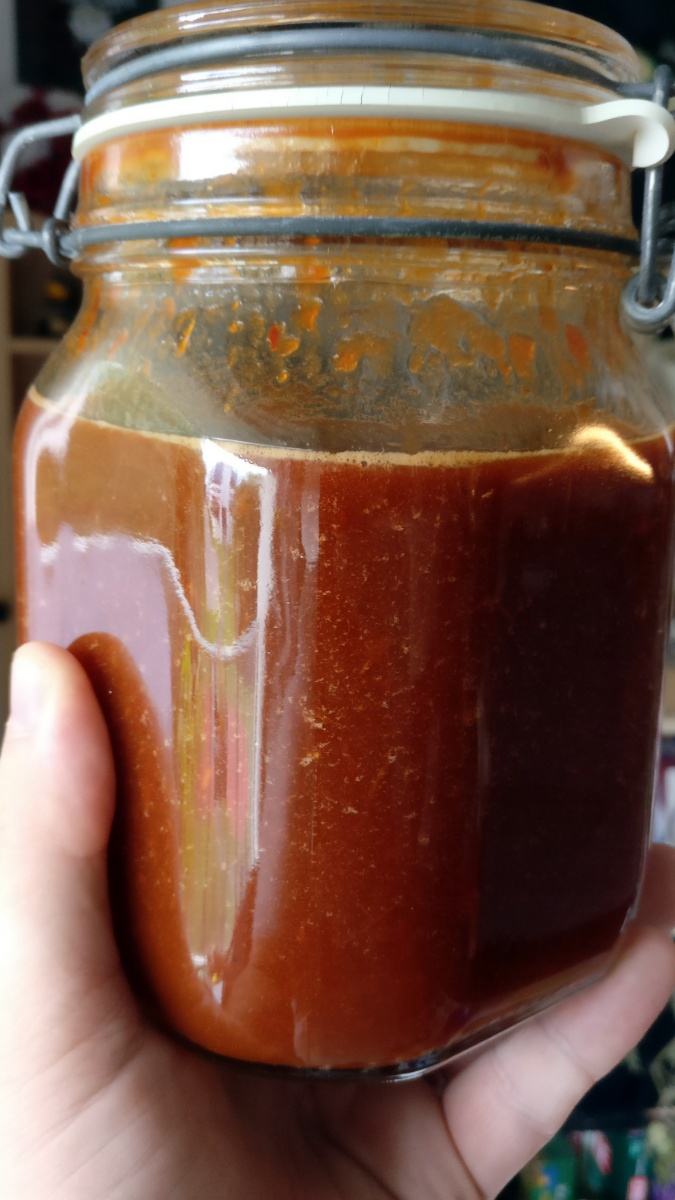Rehydrate dried chilies
I started with chile de arbol, ancho and guajillo chilies. Scoop out the insides of the dried pods with a knife. You can do this step after they are rehydrated, but I like to trim it out while dry. If you find this difficult, scoop out the innards later.
Heat a large pan to medium-high heat and dry roast the peppers about 30-60 seconds per side. They will become slightly puffy and fragrant.
Set peppers into an oven proof bowl and pour boiling water over them. Use just enough to cover the peppers. Cover and allow to sit 15-30 minutes, depending on the thickness of your peppers.
Roast red peppers
Halve two red pepper and remove seeds. Place the peppers cut side down on a rimmed baking sheet that has been lined with parchment paper.
Roast the peppers in the pre-heated 215 degree oven for about 25 minutes; or until the skins are completely wrinkled and the peppers are charred, rotating the sheet if necessary for them to cook evenly. Let the peppers cool for a minute or two, and then remove them from the baking sheet and place them in a bowl.
Cover the bowl with foil or a plate, and let cool for about 30 minutes. When the peppers are cool enough to handle, peel off the skins and discard them, dropping the peppers back into the bowl.
Making the sauce
Blend the rehydrated pepper and roasted peppers with some of the rehydration water. Mix in some apple cider vinegar. The ratio of peppers to vinegar is usually between 1:2 to 1:4, so if you have a half-cup of chilies go for one to two cups of vinegar. Add one teaspoon of salt and a tablespoon of raw sugar. Blend until smooth.
Taste, taste, taste. Fix, fix, fix. Don’t take it out of the blender until you’re in love. When re-seasoning, your first instinct will probably be to reach for the sugar, but instead you might want to water it down with more vinegar or water first. Then you can go for the sugar.

